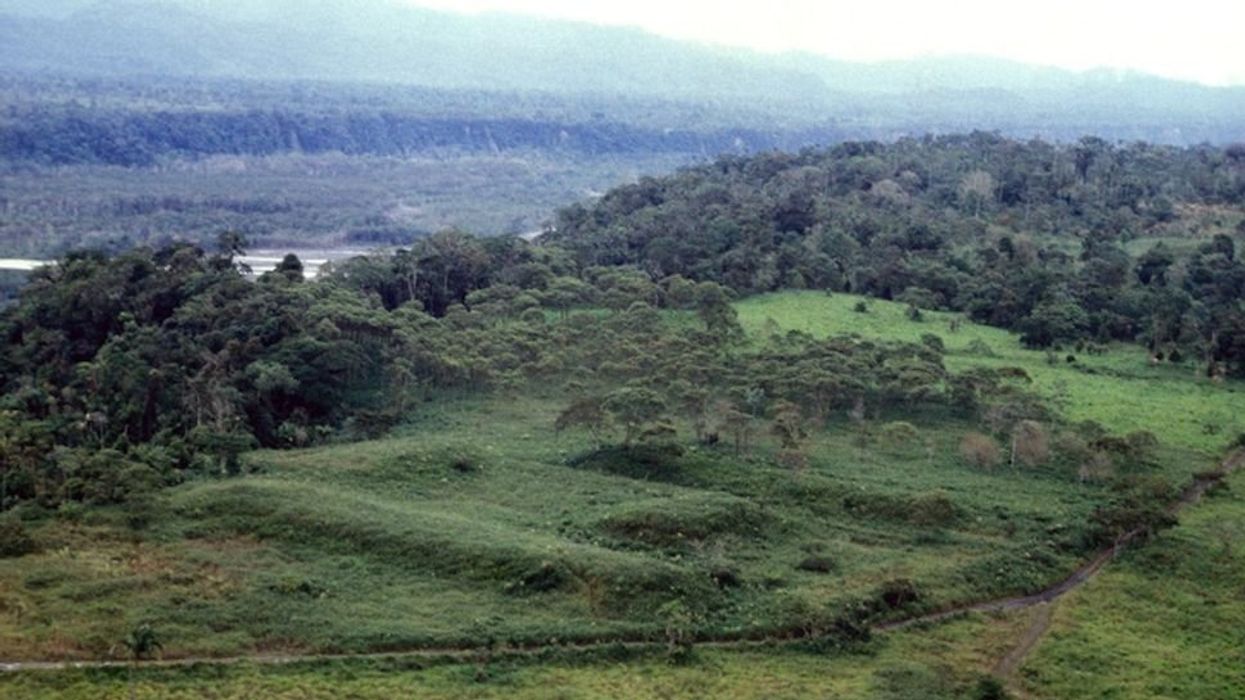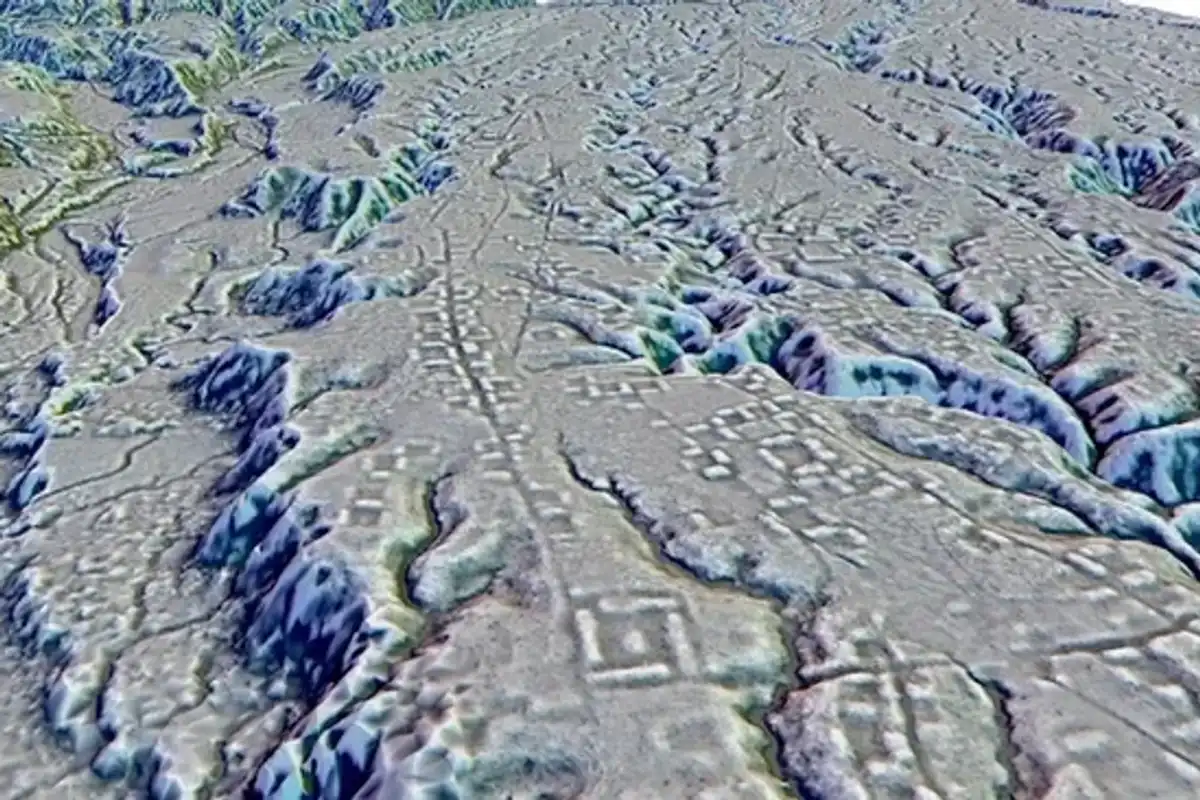Science & Tech
Harriet Brewis
Jan 15, 2024

Platforms and roads were among the structures uncovered at the 2,500-year-old site
(Stéphen Rostain via Live Science)
It’s impossible to know just how many secrets and treasures lie hidden within the dense vegetation of the Amazon rainforest.
However, by harnessing the power of laser beams, archaeologists have just unearthed a real gem.
Thanks to LiDar (light detection and ranging) technology, experts have discovered a complex network of structures and roadways that had been swallowed up by the rainforest’s vast canopy.
They belong to a lost civilisation that inhabited the Upano Valley, located along the eastern Andes in South America, some 2,500 years ago.
Scientists have been studying the area for several decades, but it wasn’t until they began using airborne LiDar (which uses pulses of light from a laser to collect measurements) that they realised just how sophisticated its population was.
Excavations showed that the site, which covers some 230 square miles (600 square kilometres), was occupied from around 500 BC to between AD 300 and 600, according to researchers, who published their findings in the journal Science.
In addition, the LiDar images revealed that more than 6,000 rectangular earthen platforms, plaza structures and mounds had been built across the site, and that these were connected via an extensive system of roadways and footpaths.
"The streets not only crisscrossed throughout the site but also led outside of the site," the study’s lead author, Stéphen Rostain, told Live Science.
"These roadways all functioned together and were used to connect the community."

Rostain and his colleagues also uncovered groupings of nearly 15 "distinct" settlement sites that ranged in size and number of structures, according to a statement released by the researchers.
Some of these settlements also featured "huge mounds" that stretched up to 492 feet (150 metres) long and stood 26 feet (8 metres) high.
The team used LiDar to analyse half of the site, which was built by members of the pre-Hispanic Kilamope and Upano cultures – two sedentary agrarian societies that once occupied the valley.
After a "hiatus," some of the settlements were occupied by the Huapula culture, the archaeologists noted in their study.
Rostain stressed how impressively elaborate the site was, both in its variety of constructions and the enormity of some of the structures.
Based on its size and complexity, the area "resemble[d] similar Maya urban systems in Central America," his team’s statement pointed out.
"Such a discovery is another vivid example of the underestimation of Amazonia's twofold heritage: environmental but also cultural, and therefore Indigenous," the authors wrote in their paper.
"We believe that it is crucial to thoroughly revise our preconceptions of the Amazonian world and, in doing so, to reinterpret contexts and concepts in the necessary light of an inclusive and participatory science," they added.
Hopefully, tools like LiDar will continue to drive progress in our understanding of these mysterious ancient societies.
After all, as Rostain explained to Live Science: "I have explored the [Upano Valley] site many times, but LiDar gave me another view of the land.
"On foot you have trees in the way, and it's difficult to see what's actually hidden there."
His team’s findings are proof that the Amazon still has many more secrets to divulge.
Sign up for our free Indy100 weekly newsletter
Have your say in our news democracy. Click the upvote icon at the top of the page to help raise this article through the indy100 rankings
Top 100
The Conversation (0)













